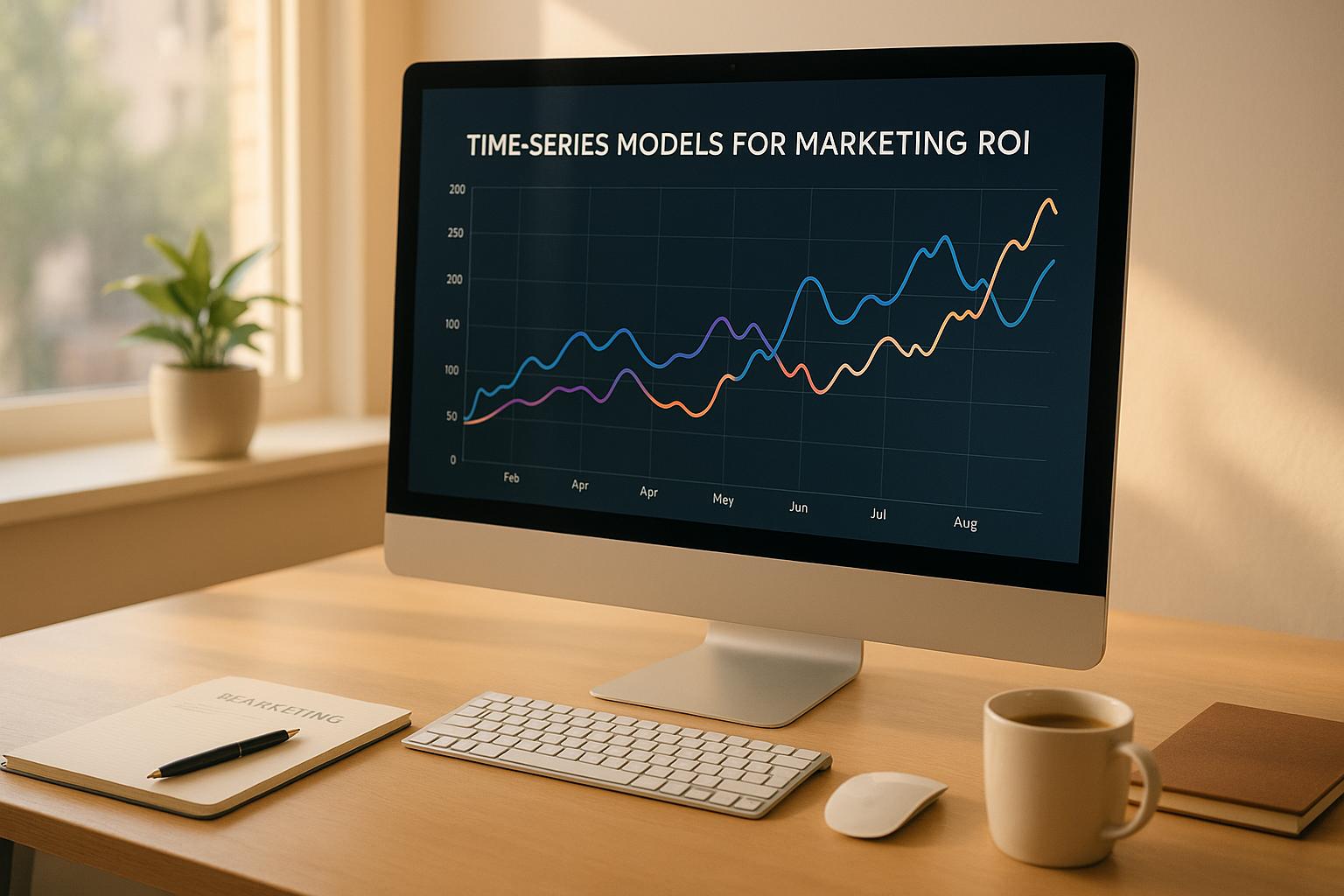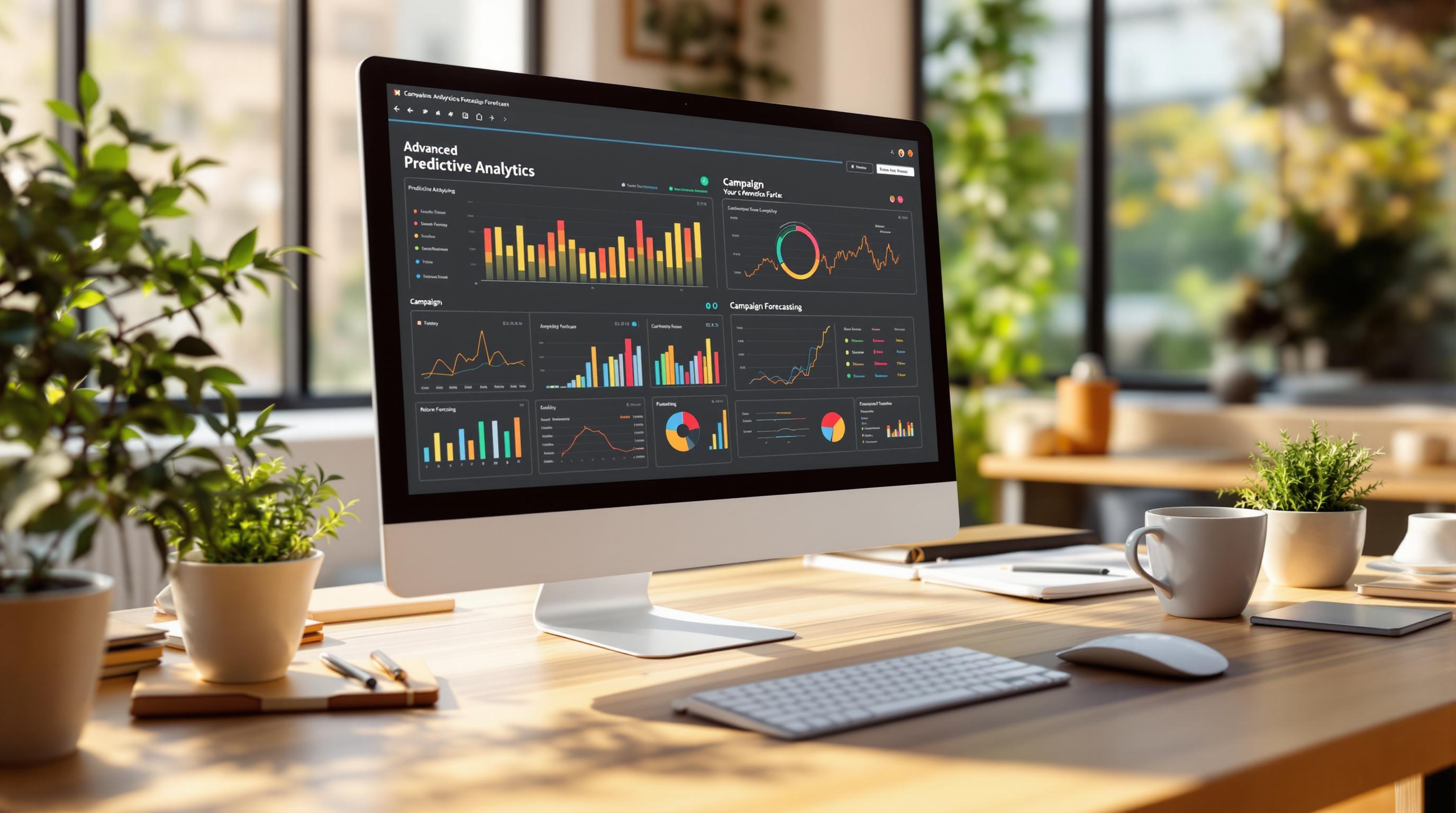Real-time alerts help you monitor marketing campaigns by sending instant notifications when key metrics change unexpectedly. This lets you act fast to fix problems, adjust strategies, and stay on track with your goals. Here’s what they offer:
- Immediate updates on performance, budget, and technical issues.
- Faster troubleshooting to minimize disruptions.
- Smarter decisions with live data insights.
For example, you can get alerts if your click-through rate (CTR) drops below 1%, your daily spend exceeds limits, or landing pages fail to load. This ensures campaigns run smoothly and deliver better results. Keep reading to learn how to set up and optimize real-time alerts effectively.
Realtime Campaign Management & Monitoring
Understanding Real-Time Alerts and Their Function
What Are Real-Time Alerts?
Real-time alerts are instant notifications that flag unusual changes in campaign performance data. They help marketers quickly address shifts in critical metrics like traffic surges, drops in conversion rates, unexpected ad spend, or click-through rate changes. These alerts ensure campaigns stay on track with performance goals while avoiding unnecessary costs.
Once you understand their role, the next step is to set them up effectively to suit your campaign needs.
Setting Up Real-Time Alerts
To configure these alerts, you’ll need to:
- Identify specific triggers, like a dip in CTR or a spike in ad spend.
- Select notification methods, such as email or SMS.
- Adjust the alert frequency to avoid being overwhelmed with unnecessary updates.
When set up correctly, real-time alerts become an essential tool for monitoring and fine-tuning campaigns as they run.
Using Real-Time Alerts in Campaign Monitoring
Real-time alerts act as an early warning system for your campaigns. Here's how they can be applied in practice:
| Alert Type | Purpose | Common Triggers |
|---|---|---|
| Performance Alerts | Track campaign success | CTR falls below 1% |
| Budget Alerts | Keep spending under control | Daily spend exceeds a set limit |
| Technical Alerts | Spot technical issues quickly | Landing pages fail to load |
When setting up alerts, focus on metrics that truly matter to your campaign's success. Avoid overloading your system with alerts for minor fluctuations and instead prioritize those that demand immediate action.
Many marketing analytics tools offer real-time alerting features. These platforms often integrate with existing systems via APIs or webhooks, giving you the flexibility to tailor your monitoring setup to your specific campaign goals [1][2].
Advantages of Real-Time Alerts for Marketers
Instant Insights on Campaign Performance
Real-time alerts provide immediate updates on critical metrics like traffic, engagement, and conversions. This means marketers can quickly spot which ads are performing well and shift budgets to get the most out of active campaigns.
More importantly, these alerts allow for quick action, helping resolve potential problems before they grow into bigger issues.
Faster Issue Resolution
When technical glitches or performance dips happen, every second matters. Real-time alerts ensure marketers can tackle problems as soon as they arise, reducing disruptions.
| Alert Type | Response Time | Potential Impact |
|---|---|---|
| Technical Issues | Seconds to Minutes | Prevent revenue and engagement losses |
| Performance Drops | Minutes | Protect conversion rates |
| Budget Alerts | Real-time | Keep ad spend under control |
By addressing issues quickly, marketers can stay focused on optimizing their strategies instead of putting out fires.
Smarter, Data-Driven Decisions
Once immediate problems are handled, real-time data helps marketers fine-tune their campaigns. Unlike outdated reports, these live insights allow for precise adjustments in targeting, budget allocation, and messaging.
With tools from the Marketing Analytics Tools Directory, marketers can monitor campaigns in real time, ensuring they stay on track and deliver strong results.
sbb-itb-5174ba0
Steps to Implement and Optimize Real-Time Alerts
Choosing the Right Analytics Tools
The effectiveness of real-time alerts starts with picking the right analytics tools for your campaign. Platforms like Google Ads and Facebook Analytics offer strong alert features for tracking essential metrics.
When selecting tools, keep an eye on these key features:
| Feature | Why It Matters | Impact on Campaigns |
|---|---|---|
| Real-time Data & Custom Alerts | Provides instant updates and specific monitoring | Helps you act quickly on critical changes |
| Cross-platform Integration | Combines data from multiple sources | Gives a unified view of performance |
| Mobile Notifications | Keeps you informed on the go | Ensures you stay updated anytime, anywhere |
For a more tailored solution, explore the Marketing Analytics Tools Directory to find tools that match your campaign's unique needs. Once you've chosen your tools, the next step is setting up alerts that align with your goals.
Configuring Alerts for Key Metrics
Set up alerts for metrics that directly affect your campaign's performance, such as conversion rates, CPC, and budget pacing. Focus on the metrics that matter most, like:
- Conversion rate shifts
- CPC changes
- Budget usage trends
- Quality score updates
Once your alerts are configured, managing them effectively is crucial to avoid missing out on important updates.
Strategies for Better Monitoring
Use these techniques to make the most of your alert system:
- Set Smart Thresholds: Base thresholds on historical data to avoid unnecessary alerts. For instance, only trigger an alert for a 20% drop in conversion rates within two hours. Revisit these thresholds monthly to keep them relevant.
- Prepare Action Plans: Have a clear response plan for each type of alert. For example, decide in advance whether you'll pause ads or adjust budgets when specific triggers occur.
- Fine-Tune Alerts Regularly: Review your alerts frequently to reduce noise from irrelevant notifications. This ensures you can focus on the issues that truly matter.
Conclusion: Boosting Campaign Performance with Real-Time Alerts
Key Takeaways
Real-time alerts are changing the game for campaign monitoring. They allow marketers to quickly spot issues, act fast, and make decisions based on live data. This approach helps avoid performance dips and ensures campaigns deliver the best possible ROI. Here's a quick breakdown:
| Benefit | Impact | Outcome |
|---|---|---|
| Faster Detection | Identifies issues quickly | Prevents performance drops |
| Swift Response | Enables immediate action | Keeps campaigns on track |
| Data-Driven Choices | Supports real-time tweaks | Boosts ROI and overall performance |
When set up correctly, real-time alerts act as an early warning system. They help marketers catch and fix problems right away, keeping campaigns running smoothly. This quick action is critical, as even small delays can hurt results [1].
Steps for Marketers to Take
To make the most of real-time alerts, here's what you should do:
- Evaluate your tools: Make sure your current systems can handle real-time monitoring. If not, check resources like the Marketing Analytics Tools Directory (topanalyticstools.com) to fill the gaps.
- Focus on key metrics: Monitor the numbers that matter most to your campaign's success.
- Refine and adjust: Regularly update alert settings and response plans based on what the data shows.
Real-time monitoring isn't just about setting up alerts - it’s about staying alert and acting fast. By following these steps and using the right tools, you can keep your campaigns performing at their best [2].
FAQs
How to set up alerts in Google Ads?

Setting up alerts in Google Ads is simple. Here's how:
- Open the app and navigate to 'Settings'.
- Choose 'Custom notifications' and tap 'Create'.
- Select the notification level: Account, Campaign, or Ad Group.
Pro tip: Set notifications for key metrics, like a CTR dropping below 1% or a 20% decrease in conversions. This helps you catch and address problems quickly.
| Alert Type | Threshold Example | Purpose |
|---|---|---|
| Click-through Rate | Below 1% | Spot underperforming ads |
| Conversion Rate | 20% drop | Detect conversion issues |
| Budget Usage | 80% spent | Avoid campaign interruptions |
These alerts help you stay on top of campaign performance and adjust as needed.
What metrics should I monitor with real-time alerts?
Keep an eye on these metrics to spot potential problems early:
- Drops in click-through rates
- Spikes in bounce rates
- Major shifts in conversion rates
- Warnings about budget depletion
- Changes in competitive bids
Monitoring these ensures you're ready to act when something goes off track.
How quickly should I respond to real-time alerts?
For issues like performance drops or budget concerns, aim to respond within 15-30 minutes to minimize impact.
Can I customize alert thresholds?
Yes, most platforms let you set thresholds based on your goals. For example:
- Set alerts for traffic decreases of 30% during peak hours.
- Flag conversion rate drops over 15%.
- Watch for cost-per-conversion increases exceeding 25%.
Custom thresholds keep your alerts aligned with your specific objectives.
What should I do when I receive an alert?
Alerts only matter if you act on them. When you get one:
- Review the affected metrics.
- Identify the root cause.
- Take corrective action, like adjusting bids or reallocating budgets.
- Document your response for future learning.
Quick, well-thought-out actions ensure your campaigns stay on track and meet performance targets.


